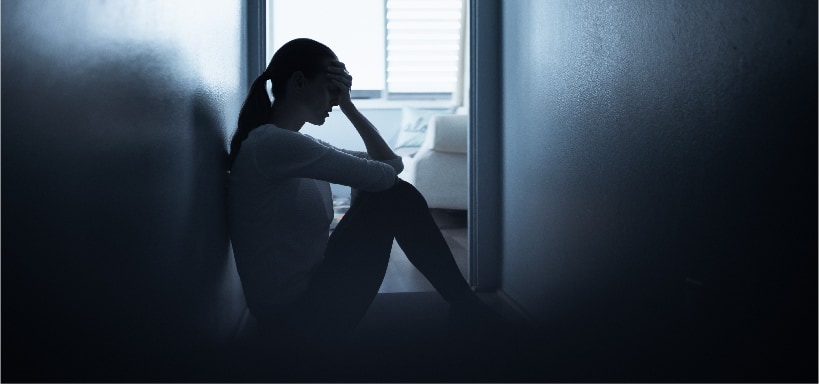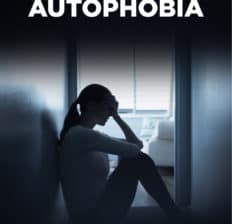This Dr. Axe content is medically reviewed or fact checked to ensure factually accurate information.
With strict editorial sourcing guidelines, we only link to academic research institutions, reputable media sites and, when research is available, medically peer-reviewed studies. Note that the numbers in parentheses (1, 2, etc.) are clickable links to these studies.
The information in our articles is NOT intended to replace a one-on-one relationship with a qualified health care professional and is not intended as medical advice.
This article is based on scientific evidence, written by experts and fact checked by our trained editorial staff. Note that the numbers in parentheses (1, 2, etc.) are clickable links to medically peer-reviewed studies.
Our team includes licensed nutritionists and dietitians, certified health education specialists, as well as certified strength and conditioning specialists, personal trainers and corrective exercise specialists. Our team aims to be not only thorough with its research, but also objective and unbiased.
The information in our articles is NOT intended to replace a one-on-one relationship with a qualified health care professional and is not intended as medical advice.
What Is Autophobia? How to Treat the Fear of Being Alone
April 9, 2022

What is a fear of being alone called? When a fear of being alone is intense enough, it can be called “autophobia,” which describes someone who is irrationally afraid of solitude, isolation, and being ignored or abandoned, especially during an emergency.
If you consider yourself to be an extroverted type of person, you probably prefer to be in the company of others rather than by yourself. There’s isn’t necessarily anything wrong with this mindset, unless your dislike of alone time starts to stand in the way of your mental health and happiness.
While it’s not quite the same as loneliness, autophobia and loneliness can both increase symptoms tied to chronic stress, which is why both are important to manage and treat.
What Is Autophobia? (Autophobia vs. Loneliness)
Autophobia, also sometimes called monophobia or isolophobia, is a strong fear (or phobia) of isolation and solitude.
This type of fear can kick in both when someone is actually physically alone and also when someone dreads and anticipates being left all by her or himself. (In other words, it can be an imagined fear.)
It’s not entirely known why some people develop autophobia, but experts believe it’s related to deep unconscious panic over being ignored, unloved or unsafe.
It often occurs with a history of trauma and with other anxiety symptoms and disorders. Autophobia can also overlap with other phobias, such as agoraphobia, which is extreme or irrational fear of entering open or crowded places.
What is the difference between autophobia and monophobia? Do I have monophobia?
The terms autophobia, monophobia, isolophobia and eremophobia are mostly used to describe the same type of fear: that of being abandoned and left alone.
Sometimes the term eremophobia is used to describe a deep fear of being isolated, while autophobia is an intense fear of solitude or one’s self. But overall these terms point to the same type of mental health issue and are treated in the same ways.
Autophobia vs. Loneliness:
Is autophobia basically the same thing as intense loneliness? Not exactly.
Loneliness can be uncomfortable to deal with, cause sadness or even depression, and often increases symptoms tied to stress. However, loneliness does not usually trigger extreme feelings of danger with regard to being alone. When someone is lonely, that person is not normally scared but more so sad.
Loneliness is considered a universal human emotion that is normal and common when someone is alone a lot. It’s only when the fear of being alone starts to become irrational and disrupts someone’s life that intervention is needed (although too much loneliness can be problematic for someone’s mental health, t00).
Symptoms
Autophobia has many of the same symptoms and characteristics as other related anxiety disorders — including panic attacks, hyperventilation disorders, social anxiety, PTSD, generalized anxiety, borderline personality disorder and agoraphobia.
Symptoms of autophobia can include both mental and physical symptoms. They typically include:
- Being scared of being stranded and alone. This can include intense anxiety when thinking about being alone or secluded.
- Self-hatred, low self-esteem and sometimes depression. This can be tied to fear of judgment and abandonment.
- Being afraid of not getting help in case of an emergency. This can result in fear of going out in public, crowded places where the person blends into the crowd and is ignored or overlooked.
- Fear of anything uncomfortable or unfamiliar.
- Imaging worst-case scenarios, including irrational fear of death, injury or impending disasters if someone is to become isolated (a symptom tied to generalized anxiety disorder).
- Fear of strangers, burglars, intruders or strange noises while at home.
- Going to extreme lengths to avoid being isolated.
- Fear of fainting and losing one’s mind and sense of judgment.
- Panic attacks and strong desire to flee from home.
- Physical symptoms tied to increased stress and anxiety, such as lightheadedness, sweating, shaking, nausea, loss of appetite, dry mouth, increased heart rate and trouble sleeping.
- Higher risk for substance abuse disorders (such as alcohol or marijuana to cope with stress and anxiety).
- In children, symptoms also tend to include tantrums, clinging, crying or refusing to leave a parent’s side.
Causes
Psychologists believe that phobias can stem from childhood issues such as abandonment or abuse, low self-esteem and sometimes genetic factors.
Risk factors for developing authphobia include:
- Children being abandoned by their parents when they are very young, which causes trauma and anxiety. This can result in adults being afraid that all of the important people in their lives are going to leave or abandon them.
- Being emotionally neglected or rejected by important people in one’s life.
- History of PTSD and significant life-altering experiences.
- Death of a loved one or ending of an important relationship, especially early in life (which causes fear of being without one specific and important person).
- History of poverty or financial problems.
- Unhealthy intimate relationships.
- Recent stressful event that exceeds one’s ability to cope.
Diagnosis
Is autophobia a mental illness? It’s a type of phobia, which is a form of anxiety disorder.
A psychologist or psychiatrist can diagnose someone with autophobia if the person has one or more symptoms experienced mentioned above for at least six months — such as intense fear of staying home alone, being scared to go in public, fleeing from home, etc. A diagnosis is usually made after a therapist has a lengthy conversation with the patient about symptoms, history and beliefs.
There aren’t necessarily permanent “cures” for phobias, however they can be managed with help from therapy and other interventions. This is especially important if someone’s symptoms are intense enough to disrupt general health, the ability to work and relationships.
Treatment
Autophobia is treated in much the same ways as other phobias and types of anxiety. For example, anxiety remedies like therapy, exposure, exercise and stress-relieving activities can all help.
Here’s more about treatment options for managing autophobia/fear of being alone:
1. Therapy (Usually Exposure Therapy, Cognitive Behavioral Therapy)
Psychotherapy is the first line of defense for most phobias. Unfortunately, it’s not always easy for people with phobias to admit they have a problem or to seek professional help, but this step is usually key for overcoming phobias.
One tool commonly used in therapy to help people overcome phobias is exposure therapy, in which someone faces fear head on in small increments so that person can gradually gain confidence in dealing with the source of fear.
Among people with autophobia, a therapist helps the client increase the amount of time alone slowly until it becomes less scary. Exposure therapy can be done in real-life situations (in vivo exposure) or using imagined situations.
Systematic desensitization is one type of exposure therapy that happens very slowly and is effective for dealing with phobias because it doesn’t worsen anxiety.
Cognitive behavioral therapy (CBT) is also used to help change the client’s thought patterns and pinpoint irrational beliefs that contribute to the phobia. With help from a CBT professional, the client can improve how she perceives to fears and react by replacing irrational thoughts with more realistic and empowering ones.
If someone with a phobia experiences intense anxiety that is interfering with his quality of life, he might also be prescribed medications (such as antidepressants or benzodiazepines) to help get symptoms under control while also attending therapy.
2. Feeling More Connected When Alone
Just about everyone feels lonely and isolated at times. When someone experiences normal amounts of loneliness and mild autophobia symptoms, it can be helpful to simply add more connection to the person’s life, even when alone.
Ways to feel more connected include:
- calling others on the phone or using video chats
- listening to music or playing “background noise” to avoid prolonged silence
- listening to podcasts or watching videos online
- watching TV
- reading
3. Reaching Out to Others More
It’s not realistic or possible for most people to be surrounded by others 24/7. However, fostering more meaningful relationships and gaining social support can help dull anxiety and loneliness.
Ways to prioritize healthy relationships include:
- joining clubs or teams
- volunteering
- asking friends or family to join you for dinner or other activities
- going to a church or religious place of worship
- enrolling in a gym or fitness center
4. Establishing a Regular Self-Care Schedule to Reduce Stress
Sticking to a predictable routine can help people with anxiety reduce their fear of the unknown.
You can create a routine that helps you stay productive and limits stress by waking up and sleeping at the same times each day, exercising consistently, eating regular meals, and filling your day with other tasks and habits that fill your time and give you purpose and a sense of accomplishment.
Ideally, someone who deals with phobias should include these types of activities in their day:
- Regular exercise, especially daily walks outside if possible
- Eating an anti-inflammatory diet
- Getting enough sleep (seven to nine hours every night)
- Avoiding stimulants, including caffeine and nicotine, plus limiting use of alcohol and other drugs
5. Meditation and Mindfulness Exercises
Meditation, mindfulness exercises, deep breathing exercises, physical exercise, aromatherapy and other relaxation practices (like progressive muscle relaxation, journaling, yoga and reading) are all highly recommended for people with phobias and anxiety.
These help form a better mind-body connection, increase your ability to cope with stress, and can help you sleep and focus better so you think more clearly and feel more confident.
Conclusion
- Autophobia (also called monophobia) is an intense fear of being alone that can interfere with someone’s ability to function, relationships and quality of life.
- It’s considered a phobia because it’s irrational and not based on realistic events. It often occurs with other anxiety symptoms or disorders, such as social anxiety, depression or panic attacks.
- Treatment for autophobia usually involves therapy/counseling, exposure to the fear, managing stress by including more relaxing activities in one’s day and connecting to others more to increase self-esteem.




